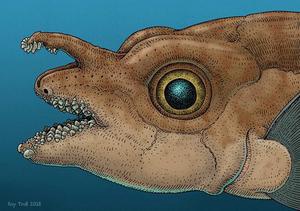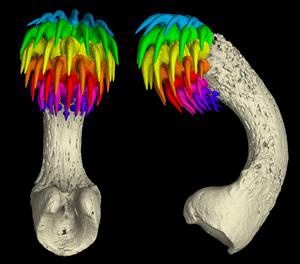Overview
- The PNAS study, led by Karly E. Cohen with colleagues from the University of Washington, University of Florida and University of Chicago, documents true teeth on the male chimaera’s forehead appendage known as the tenaculum.
- Genetic analyses show the tenaculum teeth express tooth-specific genes absent from skin denticles, and researchers identified a dental lamina on the appendage previously known only from jaws.
- High-resolution CT scans of modern Spotted Ratfish from Puget Sound and a 315-million-year-old fossil reveal rows of teeth on the tenaculum and link its attachment to jaw musculature.
- The structure is male-specific and is interpreted as a mating aid that helps males grasp females, consistent with its retractable, hooked teeth and the species’ other grasping organs.
- Authors frame the finding as evolutionary co-option of the oral tooth-development program to build a novel reproductive device and note opportunities for further developmental and behavioral study.


